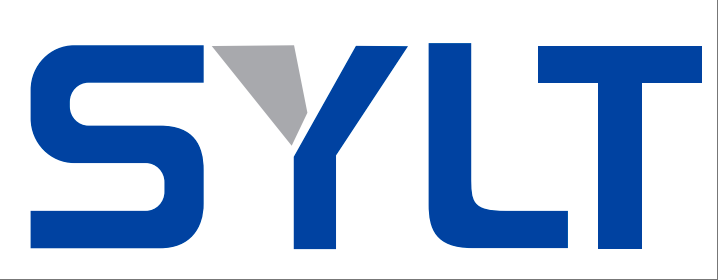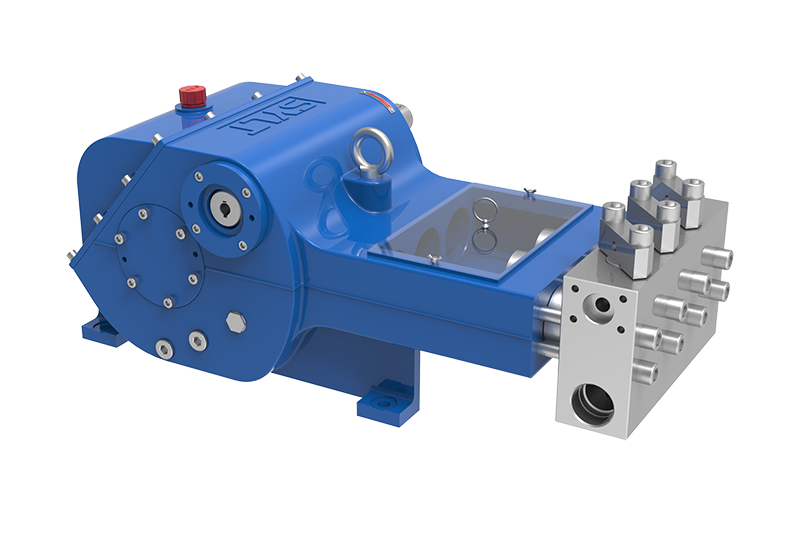The Essential Guide to Choosing the Right High Pressure Booster Pump for Your Needs
When it comes to operating machinery, enhancing performance is often key. One of the vital components that can significantly influence the effectiveness of various systems is the high-pressure booster pump. **Choosing the right high-pressure booster pump** tailored to your specific needs can make a significant difference in efficiency, productivity, and cost-effectiveness. In this extensive guide, we will walk you through everything you need to know about high-pressure booster pumps, from understanding their functions to selecting the right one for your requirements.
Table of Contents
- Understanding High-Pressure Booster Pumps
- Types of High-Pressure Booster Pumps
- Applications of High-Pressure Booster Pumps
- Key Features to Consider When Choosing a High-Pressure Booster Pump
- Calculating Your Pressure Needs
- Maintenance and Durability of Booster Pumps
- Cost Considerations for High-Pressure Booster Pumps
- Frequently Asked Questions (FAQs)
Understanding High-Pressure Booster Pumps
A **high-pressure booster pump** is a mechanical device designed to increase the pressure of fluids, ensuring that these fluids are delivered efficiently through piping systems. These pumps are fundamentally crucial in various industries, from manufacturing and agriculture to municipal water supply. Understanding their operation can help you appreciate the significance of selecting the right model for your specific application. The basic function of a booster pump is to enhance pressure, making it possible to move fluids against gravity or through long distances.
Types of High-Pressure Booster Pumps
When selecting a high-pressure booster pump, it’s essential to first understand the different types available, as each type has unique characteristics and applications:
Centrifugal Pumps
Centrifugal booster pumps are among the most commonly used types. They utilize a rotating impeller to increase the velocity of the fluid, transforming it into pressure. These pumps are ideal for a wide range of applications due to their efficiency and simplicity.
Positive Displacement Pumps
Positive displacement pumps work differently; they move fluid by trapping a fixed amount and forcing it into the discharge pipe. This type is particularly effective for applications requiring consistent flow rates and high pressures.
Multistage Pumps
Multistage pumps consist of multiple impellers in series on a single shaft. This design allows them to generate higher pressures than single-stage pumps, making them suitable for applications like water supply and irrigation.
Submersible Pumps
Submersible pumps are designed to operate while submerged in the fluid being pumped. They are often used in applications such as groundwater extraction and sewage management, where high pressure is required to lift the fluid to the surface.
Applications of High-Pressure Booster Pumps
High-pressure booster pumps find applications across various sectors. Understanding these applications can help you determine the right pump for your needs:
Industrial Processes
In industrial settings, booster pumps are crucial for processes that require high-pressure water or liquid delivery, such as cooling systems, washing lines, and material handling.
Agricultural Irrigation
In agriculture, these pumps are essential for efficient irrigation systems, ensuring that water reaches crops even in elevated or remote locations.
Municipal Water Supply
Municipal systems utilize high-pressure booster pumps to enhance water distribution, particularly in areas where gravity-fed systems are insufficient to meet demand.
Fire Protection Systems
High-pressure booster pumps are integral to fire protection systems, ensuring adequate water pressure for sprinklers and hoses during emergencies.
Key Features to Consider When Choosing a High-Pressure Booster Pump
When selecting a high-pressure booster pump, it’s essential to consider several key features to ensure optimal performance:
Flow Rate
The flow rate, measured in gallons per minute (GPM) or liters per minute (LPM), indicates how much fluid the pump can deliver. A pump’s flow rate should match the demands of your specific application.
Pressure Rating
Pressure rating indicates the maximum pressure a pump can handle, usually measured in pounds per square inch (PSI) or bar. Ensure that the pump you choose meets the pressure requirements of your system.
Material Construction
The materials used in pump construction significantly influence durability. Look for pumps made of corrosion-resistant materials for applications involving aggressive fluids.
Energy Efficiency
Energy-efficient pumps can reduce operational costs significantly over time. Look for models with high-efficiency ratings to save on energy bills.
Size and Footprint
Consider the physical size and footprint of the pump to ensure it fits your installation space without compromising performance.
Noise Level
Some applications may require quieter pumps. Noise levels are important, especially in commercial or residential settings.
Calculating Your Pressure Needs
Calculating your pressure needs is crucial for selecting the right high-pressure booster pump. Follow these steps to determine your requirements:
Determine Elevation Changes
Consider the vertical distance the fluid needs to be lifted. Each foot of elevation adds approximately 0.433 PSI to your pressure requirement.
Account for Friction Losses
Friction losses occur within pipes and fittings, reducing the effective pressure. Use a friction loss calculator or chart to estimate these losses based on pipe diameter and length.
Consider Flow Rate Requirements
Determine the required flow rate in your system. Higher flow rates may require pumps with higher pressure ratings to maintain efficiency.
Calculate Total Dynamic Head (TDH)
The total dynamic head combines elevation changes, friction losses, and any additional pressure needed for your system, providing a comprehensive measure of your pump’s requirements.
Maintenance and Durability of Booster Pumps
Proper maintenance is essential to ensure the longevity and effectiveness of your high-pressure booster pump. Regular maintenance tasks include:
Routine Inspections
Conducting routine inspections can help identify potential issues before they escalate. Check for leaks, unusual noises, and vibrations that may indicate problems.
Regular Cleaning
Debris buildup can affect pump efficiency. Regularly clean inlet filters and ensure the pump operates in a clean environment.
Fluid Checks
Monitor the quality of the fluid being pumped. Contaminated fluids can damage pump components over time.
Lubrication
If your pump has mechanical seals and bearings, ensure they are adequately lubricated to reduce wear and tear.
Cost Considerations for High-Pressure Booster Pumps
When budgeting for high-pressure booster pumps, consider the following cost factors:
Initial Purchase Price
The initial cost can vary based on the type and specifications of the pump. More advanced features typically come at a higher cost.
Installation Costs
Professional installation may be required for more complex systems. Factor in labor costs when budgeting.
Operational Costs
Consider energy consumption and maintenance costs over the pump’s lifespan. Opt for energy-efficient models to save on long-term operational costs.
Replacement Parts
Ensure you know the availability and costs of replacement parts for your pump model, as this can impact future maintenance expenses.
Frequently Asked Questions (FAQs)
1. What is the lifespan of a high-pressure booster pump?
The lifespan can vary based on usage and maintenance, but many high-quality pumps can last 10-15 years with proper care.
2. How often should I perform maintenance on my booster pump?
Routine inspections should occur monthly, while more thorough maintenance can be scheduled semi-annually or annually.
3. Can I use a high-pressure booster pump for residential applications?
Yes, residential applications such as irrigation and water supply can benefit significantly from high-pressure booster pumps.
4. What factors affect the efficiency of a high-pressure booster pump?
Key factors include flow rate, pressure settings, fluid conditions, and maintenance practices. Ensuring optimal conditions can maximize efficiency.
5. Are high-pressure booster pumps noisy?
Noise levels vary based on pump design. Some models are designed for quiet operation, making them suitable for residential areas.
Conclusion
Selecting the right high-pressure booster pump is essential for ensuring optimal performance in your application. By understanding the types available, key features to consider, and the importance of maintenance, you can make an informed decision that meets your needs. Whether for industrial processes, agricultural irrigation, or residential water supply, the right pump can lead to increased efficiency, reduced costs, and enhanced productivity. Take the time to evaluate your specific requirements, calculate your pressure needs, and explore the options available in the market. With the right knowledge and understanding, you can choose a high-pressure booster pump that truly meets your needs.
The 17th China International Powder Metallurgy and Hard Alloy Exhibition
The 2025 17th China International Powder Metallurgy and Hard Alloy Exhibition from March 10-12, 2025, at the Shanghai World Expo Exhibition and Convention Center, Hall H1, B425. We welcome guests to visit.
"Private custom" product design, reliable and durable finished products
"Private custom" like product design, reliable and durable finished products, professional and timely after-sales service. It is the "three basic concepts" that the company adheres to from the beginning until today ".
Experienced market research team, independent product development concept
We have experienced mature market research team, independent product research and development concept, professional design and manufacturing technology so that the company's products can be adjusted according to the specific requirements of customers timely design







